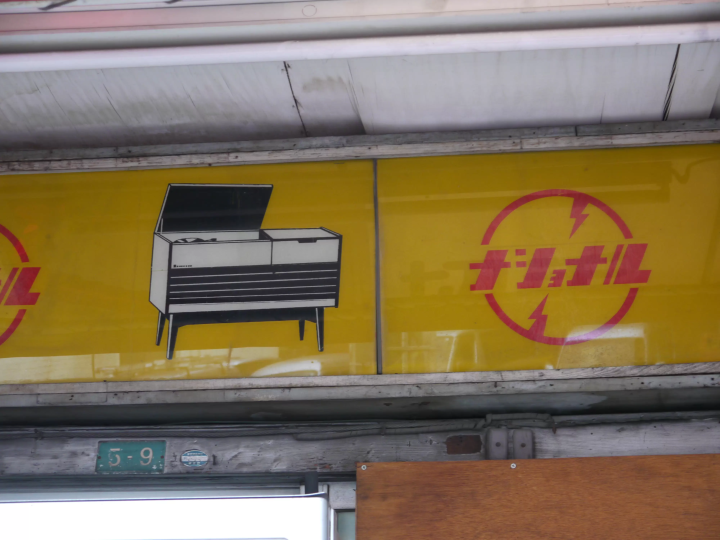"Retro exploration of Nakano" - Part 1 of the underground drainage road in Nakano, Tokyo - A stroll along the Taoyuan River Greenway following the hidden river -

Stroll along former rivers and waterways known as "ankyo". We will travel around the Momozonogawa Greenway from Nakano-sakaue in Tokyo. Along the way, you will also find a retro Showa-era old-style house cafe.
I'm Izayoi, who became a Nakano tourism reporter this year. I'm over 60 years old, but I'll be introducing the deep charm and history of Nakano in a series called "Exploring Nakano's Retro Life."
This time, we will walk through the "underground channels" that are traces of the former rivers. A culvert is a river or waterway where the water surface is no longer visible due to some kind of construction. Remnants of the river from those times, such as bridge pillars with the name and date of construction written on them, and railings, can be seen here and there as signs of the underwater channel. Feeling the "invisible waterside" and immersed in fond feelings, we will walk from Kanda River (near Nakano Sakaue) to Nakano Gosacho.
From Nakano-sakaue Station, walk down Yamate-dori Street towards the Kanda River for about 10 minutes, heading towards Suehirobashi Bridge.


At the confluence with the covered Momozono River (now the Momozono River Greenway), there is a monument to the folk song "Kanda River." Across the river is Kita-Shinjuku. There used to be a lot of apartment buildings here.

Finally, we start our walk along the Taoyuan River Greenway, tracing the "underground channels." Tokyo once had countless waterways, but with the rapid population growth and urbanization that began in the 1950s, domestic wastewater flowed into them and they became sewers. In particular, due to the influence of the capital beautification campaign in preparation for the Tokyo Olympics (1964), most of them were covered or filled in.

Retro Showa-era scenery can be seen all along the greenway.

After a leisurely 30-minute detour from Nakano-sakaue Station in Tokyo, we arrived at our first destination, the traditional Japanese cafe "Momo Garten."
This is also a Showa era scene.

Two tenement houses built in 1948 have been renovated into a cafe.

Time flows slowly inside the store.

Just 10 steps from the Momozonogawa Greenway, you can enjoy breakfast while looking out at the sunlit greenway.

It's only 500 yen and the coffee is delicious.

Goldfish are swimming in a retro aquarium.

I took a break and resumed my walk.

Many of the old bridge pillars remain. The name "Shamisen Bridge" is quite elegant.

Just before Miyazono Bridge on Okubo Street, we walked along the old course of the Momozono River. The Momozono River used to be a clear stream that split into several branches and meandered leisurely through rice paddies and farmland, but it was also a violent river that frequently flooded. After being consolidated into one branch due to housing development, it turned into a sewer, and in the 1950s, it was decided to make it into a culvert.
The goal of the walk is the railing of "Kaushinbashi" which remains in front of Nakano Ward Momoka Elementary School.


It is engraved with the year "Taisho 13". Although only one side remains, it is a miracle that the railing has survived the ages to this day. Opposite is a dye shop, which is also the "culvert sign". Perhaps they washed cloth in the pure Taoyuan River.

Walking through the culverts is like a treasure hunt and is very exciting. I will visit another culvert next time.
Momogarten
Location: 2-57-7 Chuo, Nakano-ku
Access: 10 minutes on foot from Nakano-sakaue Station on the Tokyo Metro Marunouchi Line
Nakano city is located in the western part of Tokyo's 23 wards. It is especially famous for Nakano Broadway, known as the "holy land" of subculture, but it also has many other tourist attractions such as historic shrines and temples and gourmet food. While the area around Nakano Station is undergoing a "once in a century" redevelopment, the town is undergoing change, and the town is bustling with old-fashioned, friendly shopping streets, making Nakano a very diverse city. This diversity is also what makes it a city with a population of about 17,000 people from about 120 countries.
The contents on this page may partially contain automatic translation.



































![[Wakayama Guide] Ume and Umeshu (Plum and Plum Wine)](https://resources.matcha-jp.com/resize/720x2000/2025/12/08-252248.webp)
![[2025 Update] From Kansai Airport to Namba - Recommended for travelers with large luggage! Travel comfortably by bus](https://resources.matcha-jp.com/resize/720x2000/2025/10/25-248088.webp)